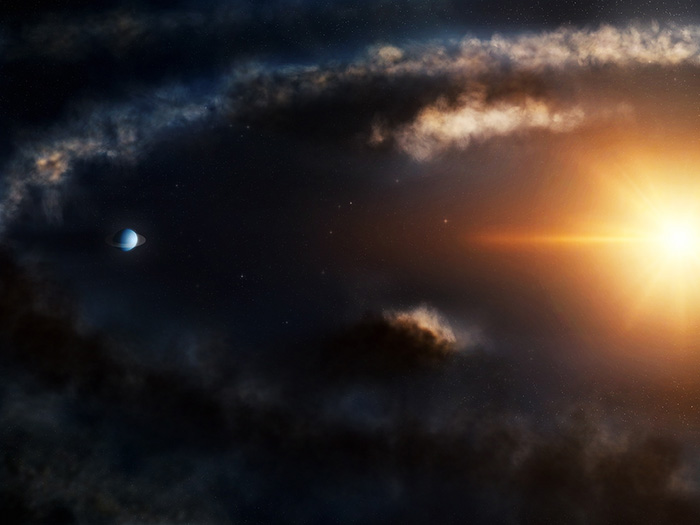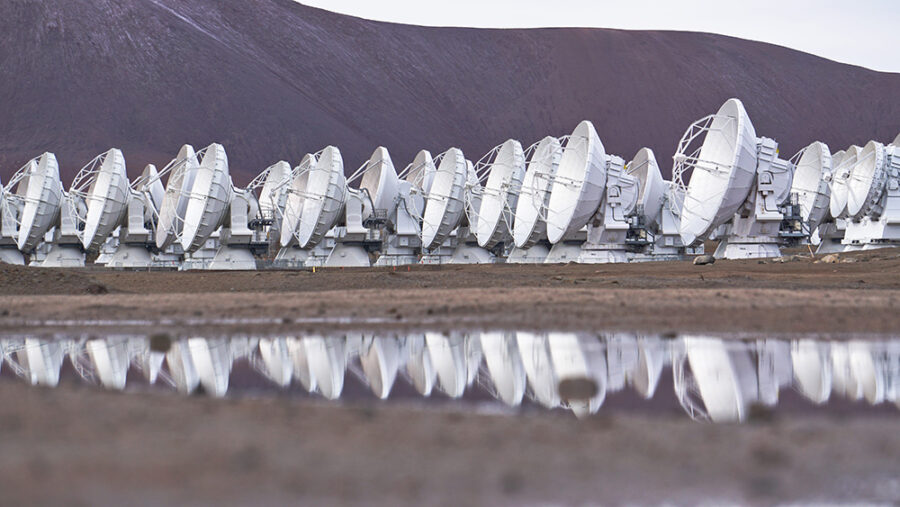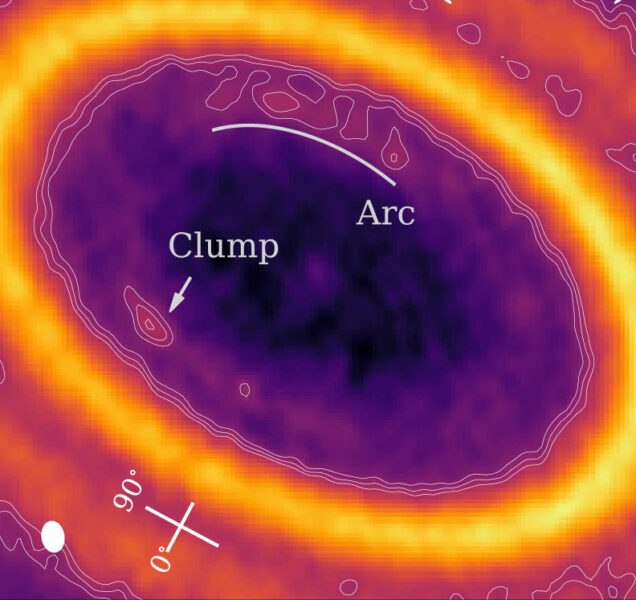New radio images reveal evidence for a planet forming around the Sun-like star LkCa 15.

M. Weiss / Center for Astrophysics, Harvard & Smithsonian
New evidence shows a planet coming together in the dusty disk of material orbiting the Sun-like star LkCa 15.
This isn’t the first time that astronomers have reported evidence of a planet in LkCa 15’s disk. In 2012 researchers reported signs of a planet forming in the system. At only a couple of million years old, it would have been the youngest planet found yet. And a follow-up study in 2015 found bright spots corresponding to three Jupiter-size planets growing in the system, referred to as LkCa 15 b, c, and d. But follow-up studies found only a dusty inner disk where those infant planets would have been.
Nevertheless, gaps and asymmetries in the disk structures still suggest the presence of protoplanets. So even though the previously proposed candidates were disproven, the hunt for real planets in the disk continued.

Pablo Carrillo / ALMA (ESO / NAOJ / NRAO)
In the September 20th Astrophysical Journal Letters, Feng Long (Center for Astrophysics, Harvard & Smithsonian) and colleagues used the Atacama Large Millimeter/submillimeter Array (ALMA) to detect two previously unseen dust structures in the disk at 42 astronomical units — farther away from the star than the previous planet candidates had been. Thayne Currie (University of Texas, San Antonio), who has studied the system but was not involved in the current study, says, “These are newly identified structures, which makes this work particularly interesting.”

Long et al. / The Astrophysical Journal Letters
The newfound structure is made up of two components, a “clump” and an “arc,” both of which contain more dust than their surroundings. These two structures are separated by about 120 degrees around the disk — and that is exactly what you’d expect to see if a massive object lay between them along the arc of the disk.
When a planet orbits a star, the pair’s gravitational forces balance in a few special locations called Lagrange points. Two of these, called L4 and L5, lie 60 degrees ahead of and behind the planet in its orbit, respectively. Dust grains can get caught in a “horseshoe orbit,” following a strange path from L4 to L5 and back again, creating a build-up of material at either end.
A Neptune-size protoplanet orbiting between the two structures in the LkCa 15 system would explain the formation of the clump and arc. Currie noted that, “such a planet would be fainter and lower in mass — and in that sense more ‘solar-system like’ — than the previously claimed protoplanets in the system.”
So, how could we confirm the existence of this planet? Deeper observations with ALMA may reveal a circumplanetary disk around it. To directly image such a planet, Currie suspects that the next generation of extremely large visible-light and infrared telescopes will be necessary.
ALMA imaging of small features in protoplanetary disks can point astronomers to interesting targets for future planet hunting efforts and for testing theories about how planets form.
 0
0









Comments
You must be logged in to post a comment.